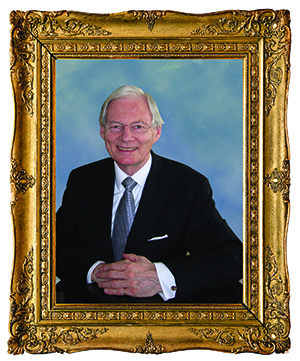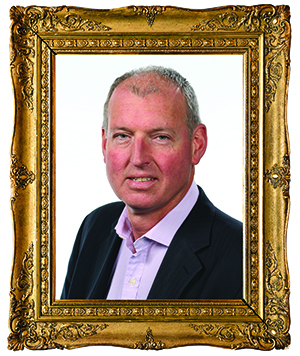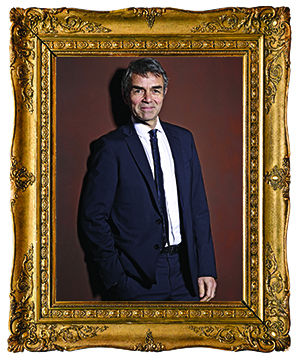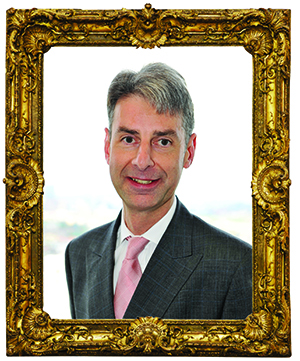 Donald Newell, president 1991-92
Donald Newell, president 1991-92
BCO co-founder Donald Newell was a senior partner at Hillier Parker when in 1987 he “kicked around the idea” of forming the organisation with the late Sir Brian Goswell.
Two years later, Newell says, “matters were moved on and under the guidance of John Leonard of CALUS at the College of Estate Management, work on structure, aims and membership started”.
With the support of 65 founder member firms, the BCO was launched on 1 May 1990. Newell, Nigel Mobbs, chairman of Slough Estates who became the first president, and John Leonard were the original directors of the company limited by guarantee.
From the original 65 members, numbers grew, despite the onset of recession in 1991, to 191 by the end of the first year and 261 by the second. There are now 1,690 members.
So why did Newell feel the UK needed the BCO? “Why did we do it? Well, the end of the 1980s saw a tremendous boom in building, but there was little cohesive discussion or best practice and little interaction between owners and occupiers.
“A lot of us thought this wasn’t a healthy state of affairs and that we could do better. So we decided to create a forum in which you could get everybody together. All professions had their bodies, so we wanted to start an organisation for both office landlords and occupiers.
“Now the BCO provides a medium for landlords and tenants to come together and that’s been a tremendous step forward from the adversarial position that we had.”
The first conference in Bristol was chaired by the late Ron Spinney. It spawned the BCO specification and other research projects that have gone on to influence the offices sector.
 Ann Minogue, president 2006-07
Ann Minogue, president 2006-07
Minogue describes her time as president as “a rollercoaster”. She took over the post while partner at Linklater at the height of the market, just before the 2008 recession.
She says: “I organised a conference in Dublin in 2006. It was one of those events where the sun was shining, everybody was in the bars and it was just fantastic because everybody was so buoyant.”
Then in 2008 Lehman Brothers collapsed. “I don’t think anybody saw the recession coming. There were a few reports about the excessive levels of bank lending, but I don’t think anybody could have anticipated what happened.”
Minogue says the BCO’s main aim then became to protect the organisation from a decline in numbers and to make sure it offered best value for money. “We wanted people to see the benefits of being a member. We were just doing our best to weather the storm.” And it worked. “We lost tens of members rather than hundreds,” she says.
She says since being BCO president the office market has become much more diverse. “Before it was office buildings for big financial services in Canary Wharf with big floor plates and lavish entrances. Now that has gone out of fashion and the spaces they are taking are different.”
 Gary Wingrove, president 2011-12
Gary Wingrove, president 2011-12
Wingrove, who was projects and construction director at BT during his presidency (he is now projects and construction director of BT facilities services), says that during his tenure the world was still emerging from the global economic crash, and the concern at the BCO was whether people would sign up for the international conferences.
“I was chair when the conference was in Geneva and it was one of those ‘Shall we do it?’ moments. But people came and enjoyed it and it helped set the scene for my year. It also reinforced the fact that we were slowly headed in the right direction economically.
“And in a good way, there wasn’t any acceleration of bad news during my year. It was a year of hearing good stories and confidence coming back into the market.”
Wingrove says he was conscious of needing to get out into the regions at every opportunity during his presidency “because it was key for them to see the president and see that the London market was interested in what they were doing”.
As well as promoting the regions, Wingrove would like his time as president “to be remembered for the NextGen – the younger membership – because we had been criticised for being an old boys’ club.”
 Colette O’Shea, president 2014-15
Colette O’Shea, president 2014-15
“It’s been a huge honour to take on the role and it’s something I have thoroughly enjoyed doing,” says O’Shea, managing director of Land Securities’ London portfolio. “What I am really proud about is that I set out with a challenge to the membership that we needed to think more about our product and our customers and how our product can benefit the customers that are using it.”
O’Shea says she wanted to focus on the physical office, the workspace, and the environment being built into offices.
Learning about the members was another challenge. “Membership is at the highest level now, 1,700, and I have picked up that there is great pride in being a member. There are an awful lot of people who dedicate time voluntarily because they want to push the BCO on. It’s a real emotional attachment to the organisation, which after 25 years is incredible.”
O’Shea also believes that having the NextGen is essential. “Through NextGen we are thinking about planning and they are pushing ideas and discussions, so it becomes very forward looking.”
And when her presidency comes to an end in July? She says: “I think I will feel a bit sad, but also very fulfilled and feel I have left a legacy.”
 David Partridge, incoming president 2015-16
David Partridge, incoming president 2015-16
“For those of us who have been in the industry since the beginning of the 1990s it is probably quite hard to accept that it is 25 years since the British Council for Offices was founded,” says incoming president Partridge, managing partner with Argent.
He says: “What a time we have had of it. Despite the fact that we have lived through a series of ups and downs, booms and busts, and an explosion in technology, many of the issues that those of us who continue to pursue the BCO mantra of ‘Defining excellence in office workspace’ face today do not seem much different from those we faced 25 years ago.”
And what about the next 25 years?
Partridge believes two things are certain: “Whatever technology might do to give us the tools to work from anywhere and at any time, people and organisations will still want to get together physically to share ideas and to develop themselves and their businesses.
“Whether those physical places are called offices, workspaces or anything else, the UK property industry and the vast cross section that are represented in the BCO will continue to be at the forefront of anticipation and innovation.”
 Richard Kauntze, chief executive from 1999
Richard Kauntze, chief executive from 1999
Kauntze was appointed the first BCO chief executive at the end of 1999. He says: “The organisation had a different structure before then. It was born out of the College of Estate Management and was based in Reading, but was really administered through the college.
“Then there was a feeling towards the end of 1990s that it was time to move on and take the BCO to a different level and I was lucky to be asked to come and do that job.”
A leap forward was to move the organisation from Reading to London, and also “to find the BCO’s place in the property world and where we sat with within the realm of other property organisations”.
Developing the BCO’s extensive research programme and the BCO specifications was also key.
Kauntze says: “The BCO was about green issues before anyone was actually thinking about them in the broader property community. Green issues were seen partly as on the fringe.”
As for the future, Kauntze says: “I hope the BCO goes from strength to strength and I hope to hang around a little longer. It is an extraordinarily good job.”
noella.pio.kivlehan@estatesgazette.com











